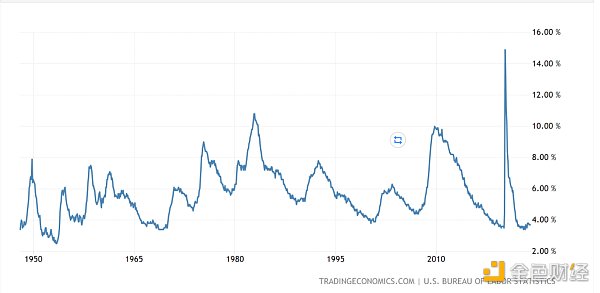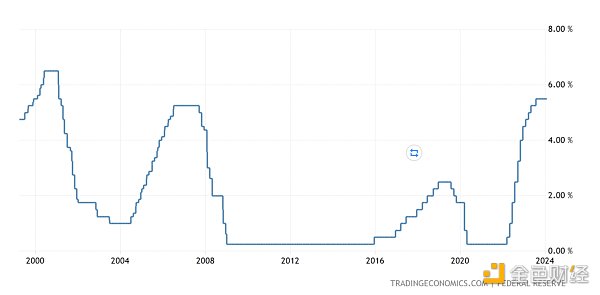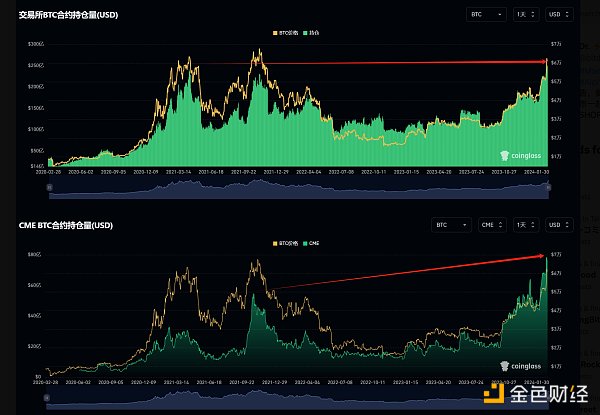Author: Dr. Y.Ting, Crypto Observer Source: X, @bitdot_eth
Whether there will be a copycat season in this bull market, my idea may be different from most people. I think there is probably no copycat season. I will look at the macro and Let me talk about my point of view at a micro level. Before that, in order for everyone to have a better understanding, I will share with you some of my superficial understanding of the macroeconomic cycle. If you think that the macroeconomics is weak and will not help you make money in the currency circle, you can skip it directly. .
Here are the threads...
Macro level
We average 50-60 per Each year will go through a complete Kangbo cycle, from recovery to prosperity, from prosperity to recession, from recession to depression, and finally from depression to the recovery stage of the next cycle, and so on. Every technological innovation that changes the destiny of mankind promotes the birth and development of a new cycle.
We are currently in the depression stage of the fifth Kangbo cycle, because the technological innovation that drove this cycle has stagnated (the technological innovation of this cycle is the Internet , look at the current wailing of web2, and compare it with the wealth creation effect of web2 10 years ago. If you are familiar with web2, you will definitely feel how big the gap is.
The global economy is stagnant; more importantly, in order to cope with the financial crisis that occurred during the previous recession (this round is the 2008 financial crisis), governments around the world have had to start crazy money printing mode (the new crown has seriously intensified This action) saved the economy in the short term, but it also created a time bomb of inflation. In order to remove this bomb, governments of various countries had to raise interest rates frantically and lock tables.
These two things put together create the depression stage. The core feature of the depression stage is stagflation. For ordinary people, stagflation is far more terrifying than inflation or deflation (you can ask you How are my friends who are engaged in non-web3 industries doing in the past few years?)
To sum up the Kangbo Depression in one sentence: You lose money no matter what you do, and the cost of doing anything is still very high. No matter you are the boss or the worker, life is difficult for everyone.
I am sure many people will be curious, what does this have to do with the currency circle? In fact, it has a lot to do with it. From 2019, the currency circle began to be gradually accepted by the traditional world, to the recent adoption of spot ETFs. If you have a relatively sensitive perception of the market, you will find that the trading techniques of bookmakers before 19 years are different from those in 2019. It was completely different after that. In fact, it was essentially old money that had gradually entered the currency circle and replaced the original local bankers in the currency circle.
Old money is deeply involved in all aspects of the economy. If there is no money in the entire traditional financial market, the currency circle will definitely flow. Sexual exhaustion. During the depression period, due to ultra-high interest rates, hot money will shift from the risk market to the risk-free bond market. The currency circle is a risk market within the risk market. This is the reason for the PVP in the currency circle in the past two years.
So, when will this round of Kang Bo depression end? We can find patterns from history:When interest rates are raised to the point where they can no longer be increased, the economy is on the verge of collapse, and the unemployment rate soars, the depression period is about to end. Many people expect that the Federal Reserve’s interest rate cut will come soon, and they imagine that Bitcoin will not rise to 200,000 US dollars by the time the interest rate is cut?
But I think this view is too optimistic. It’s not that I don’t think Bitcoin will TO DA MOON, but that the interest rate cut may not be as fast as imagined. , the current U.S. unemployment rate, a key indicator to judge whether the recession is coming to an end, is still at a historically low level (see the chart below). To put it simply, despite the fact that interest rates are so high, everyone is still living happily, so the Federal Reserve will We have more confidence to further control inflation.

p>
Real interest rate cuts are all forced, because interest rates are cut when the economy cannot bear it and there is no other way. Now it seems that the economy is quite resilient. , so I estimate that this era of high interest rates is likely to last for a long time. The current interest rates are almost the same as before the 2008 financial crisis (see the figure below), and the longer the high interest rates last, the greater the probability that they will At a certain moment, the global economy will be crushed. Crypto has been integrated into traditional finance and cannot survive alone.

p>
Back to the currency circle to look at this issue, as long as high interest rates continue, there will be less and less hot money in the market. Without new funds entering the market, we can only maintain In a PVP state, a zero-sum or even negative-sum game, it will be difficult for funds on the market to flow into higher-risk altcoins on a large scale.
Micro level
Every bull market in the past probably followed this rule:
Innovative technology opens a new narrative -> Early wealth effect -> The first wave (bubble wave) -> The value of technology is far lower than expected, the narrative collapse -> The market is oversold and bottoms out to find reasonable value -> Big waves wash away the sand, big waves Some projects have returned to zero, but at the same time, several leaders have emerged that truly create value - the second wave (value wave).
This may be a bit abstract. Let’s give two examples:
ETH:
ETH opens the programmable era of blockchain, which is equivalent to turning the blockchain from Nokia to a smartphone. This is a disruptive innovative technology, and at the same time The ERC20 standard allows everyone to issue assets, ICO brought early wealth effects, and various public chains emerged one after another. The 2017 bull market was the first wave of bubbles, and then everyone discovered that air coins are really just air.
At the end of the year, most L1 public chain projects have returned to zero, and ETH, the leader that truly creates value, has emerged. The follow-up includes the second wave of programmable blockchains until now, and the market only recognizes valuable public chains.
DEFI:
uniswap has created a disruptive AMM mechanism to make on-chain liquidation possible , this is the foundation of decentralized finance (if there is no liquidation on the chain, there is no way to talk about on-chain lending). From DEX to DEFI, in the DEFI summer of 19, the wealth effect pushed up the bubble and brought about the first wave -> Then the zoo Narrative collapse -> After the big wave, most of the DEFI projects of the year have returned to zero, and a small number of valuable leading DEFI and DEX continue to this day.
From Leek’s point of view, it is easiest to get rich in the first wave. You don’t need to understand anything. As long as you follow the right narrative track, you can get rich with anything you buy; The difficulty index of making money in the second wave has increased. Only those who have the ability to surpass most people in the market can make money. They must not only be on the track, but also on the leader.
From a project perspective, the first wave is also the easiest to get rich. PPT+fork valuation of tens of billions is not a dream. What needs to be done is to not do anything. The most important thing is to be able to stir things up and speculate on concepts; the difficulty of making money in the second wave has also increased exponentially. The business model of the track is self-generating, and you can only survive if you can win PVP with competing products. To survive, you can only make money by monopolizing it.
In this pattern, the first wave of each new narrative is driven by bubbles, from a small-scale wealth effect in the circle to a large-scale wealth effect in the circle Effect, and finally successfully exited the circle and attracted new leeks from outside the circle to enter. It was these new funds that drove the main rise of the bull market. In the end, because the new funds were exhausted, the bull market peaked and collapsed.
So, now come back and take a look at this bull market. It seems that it is not a wealth effect caused by some innovative technology, thereby attracting new leeks from outside the circle to enter and promote the bull market. The main Shenglang script is ETF! What drives this bull market is the main Shenglang! ETFs have indeed brought a large amount of old money and new money into the market, but the crux of the problem is that ETFs can only buy $BTC. If they make money on $BTC, they can only cash out into US dollars and cannot continue to invest in altcoins.
(Just like if you buy the Shanghai and Shenzhen 300 Index Fund, your money fund will only help you buy those 300 stocks. You want to buy the 301st through this fund. You cannot buy a stock), which is essentially different from the counterfeit season caused by the spillover of foreign funds (Guzhuang pulls mainstream currencies, after making money, the funds overflow to pull altcoins, and after making money, the funds return to mainstream currencies), so we saw this time Some very strange phenomena:
a) BTC is soaring, but altcoins are lacking, and they are constantly being sucked up by BTC
b) I feel that the market should be very hot, but it seems that the enthusiasm for leeks is not as high as in the previous bull market. Most people have not made any money, and there is no large-scale wealth effect like the previous bull market.
c) The volume of open positions in the current contract is at a record high (see the chart below), indicating that the market is extremely hot, which is in sharp contrast to 2) Leek’s perception.

p>
Summary
Based on macro reasons, the total number of hot money in global investable risk assets must be decreasing Yes, on this basis and coupled with micro-level reasons, I think this bull market is most likely a BTC bull market. The funds that can spill over to altcoins are far less than in previous rounds of bull markets. The altcoins are still mainly based on the amount of funds in the market, PVP. . Before the interest rate cut cycle comes, it will be difficult for a real bull market to create wealth to come.
 Anais
Anais






